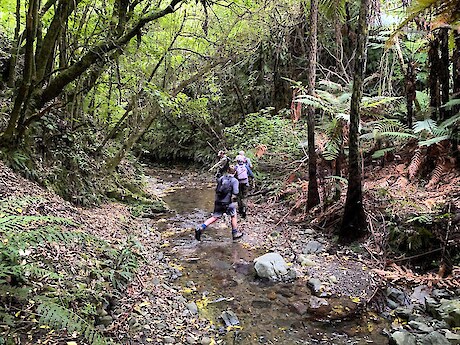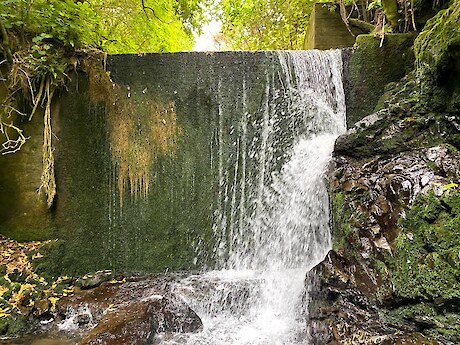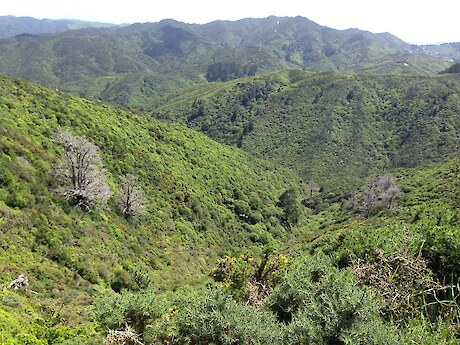Ownership and management
Most of the land is owned by Wellington Natural Heritage Trust, and contributions of land from several neighbours add to the managed area. QEII covenants protect the Trust land and some of the land owned by neighbours. The whole area is managed by the Trust under a management plan, with work mostly carried out by a contractor.
An updated action plan (PDF, 118.34 kB) was created in January 2023.
 Silver Stream runs through the reserve year-round.
Silver Stream runs through the reserve year-round.
Past land-use and recovery
This land was originally forested, then cleared and used for farming, including goat farming. In recent decades, farming across the wider area has largely been abandoned. This has allowed for reversion through scrub to native forest.
A group of prominent Wellington conservationists formed the Trust and bought the original 50 hectares at the core of the block in 1999. The Long Gully Bush project was launched on-site by Sir David Bellamy.
It has been called ‘Wellington’s Hinewai’ as the area shares the same principles of natural regeneration shown to be successful on Bank’s Peninsula at Hinewai Reserve. Management consists only of controlling pest animals and plants, with no planting carried out. As at Hinewai, the Trust hopes that demonstrating the benefits of this low-input, low-cost approach will encourage other landowners to do likewise.
 A weir and pipeline was used to draw water from Silver Stream to supplement Wellington’s supply from 1945 to 1957.
A weir and pipeline was used to draw water from Silver Stream to supplement Wellington’s supply from 1945 to 1957.
Pest animal management
Feral goats and possums remained numerous in the area, which severely hampered the recovery of native bush. Between 2006 and 2008, a fence was built to exclude goats, pigs and fallow deer. This accelerated the regeneration of natives. Possums and other predators are intensively controlled using bait stations and traps. These animals are all maintained at low levels.
The results are stunning
In just over 20 years, Long Gully Bush has been transformed:
- reducing rodent and possum numbers has allowed native plant seedlings to establish
- excluding goats has enabled native forest to overtake gorse
- keeping trampling hooves out has allowed the area’s steep slopes to stabilise and soil to accumulate
- more native vegetation and soil retention have resulted in healthy, clear streams.
 Regenerating forest on slopes that were covered with scattered gorse and rough grass when the fence was built. Makara Peak is in the distance.
Regenerating forest on slopes that were covered with scattered gorse and rough grass when the fence was built. Makara Peak is in the distance.
Threatened species from Zealandia have now colonised the bush, including tieke, toutouwai (North Island robin), kākāriki, pōpokotea (whitehead), kākā, hihi, korimako (bellbird) and titipounamu (rifleman).
Our work continues
Sustaining weed and pest animal control is critical to the area’s success. This requires ongoing fundraising for pest management, dedication, commitment and a long-term view by the Trust. Collaboration with funders, the Department of Conservation, Greater Wellington Regional Council, Wellington City Council and other environmental organisations is also a big part of the project’s success.
